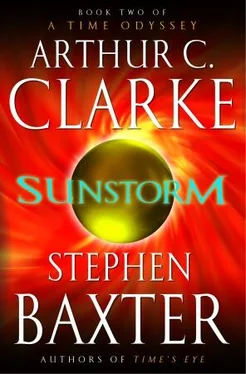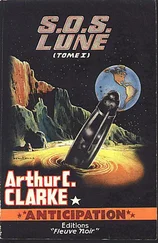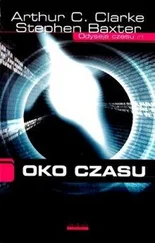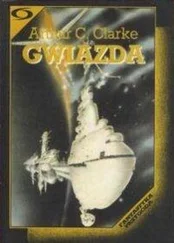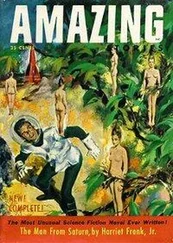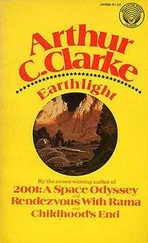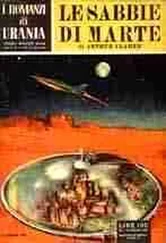The trouble was, here they were, halfway through 2038, a whole year after June 9, already six months since Alvarez had made her epochal Christmas announcement—and now less than four years before sunstorm day. Siobhan knew intellectually, from her Gantt charts and dependency diagrams and critical paths, that the various subprojects of the mighty shield program were actually going quite well. But inside her head a calendar-clock ticked steadily down.
She tried to explain to Bud. “I’m a natural pessimist,” she said. “I expect things to go wrong, and am suspicious when they go well.” She forced a smile. “Some attitude for a leader.”
He angled his head so his frosting of crew-cut hair caught the corridor strip lights. “You’re doing fine. Anyhow, when it comes to motivation, leave that to me. I was once a pain-in-the-butt sergeant at training camps in the Midwest. I can get them down and dirty. Maybe between us we’ll turn out to be a good team.” And he put his arm around her shoulders and gave her a squeeze.
She could feel his strength, and detected a scent of aftershave. Bud did sometimes seem like a relic of the 1950s. But his indomitability, straightforwardness, and sheer good humor were very welcome. All of which was rationalizing, of course.
As he held her, she felt a deep and pleasant warmth spread out through her belly and rise to her face. She was sorry when the brief hug ended.
***
On her first visit, Artemis Dome had been a scene of lunar industrial experiments. Now, just a few months later, the scale of the operation had changed utterly. The dome had been sliced open and crude extensions built on it to provide a lot more acreage of processing facility, most of it in vacuum. It was an infernal scene, Siobhan thought, with grotesque spacesuited figures gliding through banks of pipes, ducts, and metallic vessels, and everything stained the ubiquitous charcoal gray of the Moon, like a caricature of the darkest days of England’s Industrial Revolution.
The product of this mighty effort was metal.
Aluminum was the main structural component of the mass driver launch system, while iron would be required for the electromagnetic systems that would be its working muscles. But the mass driver was going to be kilometers long. The lunar colonists were having to jump straight from a trialed process to industrial-scale production; the scale change was tremendous, the pressure immense.
Bud sketched some of the difficulties. “These are tried-and-tested processes on Earth,” he said. “But up here nothing behaves the same, not a heap of ball bearings or oil flowing in a pipe …”
“But you’re getting there.”
“Oh, yes.”
Meanwhile Selene Dome, once the Moon’s first farm, had been turned into a glass factory. It was simple: you pushed lunar regolith in one end, applied focused solar heat, and drew glass out the other end, shimmering hot, to be molded into prefabricated sections.
Bud said, “Every time a journalist gets through to me, I’m asked the same damn question: why are we making the infrastructure of the shield from lunar glass? And every time I have to give the same answer: because this is the Moon. And wonderful though it is, the Moon doesn’t give you a lot of choice.”
The Moon’s peculiar composition was dictated by its formation. The NASA geologists who had studied the first samples returned by the Apollo astronauts had been puzzled: this iron-deficient, volatile-free stuff seemed quite unlike the rocks of Earth’s crust. It was more like the material of Earth’s mantle, the thick layer between crust and core. It turned out that this was because the Moon was made of Earth’s mantle—or rather, of the great gout of it that had been splashed away by that primordial, Moon-making impact.
“And so that’s what we’re left with,” Bud said. “Igneous rocks make up ninety percent of the crust here. It’s as if we were learning to live on the slopes of Vesuvius. And there’s virtually no water, remember. Without water you can’t make concrete, for instance.”
“Hence glass.”
“Hence glass. Siobhan, glass grows naturally on the Moon. Wherever a meteor falls, the regolith fuses, and glass is splashed everywhere. So that’s what we use.
“And here’s the finished product.” With a showman’s flourish he pointed to glass components, some of them many times a person’s height, stacking up in a rudimentary store out in the vacuum. “There are no prototypes here, no test articles. Everything we make is intended to be launched; everything we build will wind up on the shield—everything you see here will fly. The designs they feed us from Earth keep changing, and we’re trying to optimize our manufacturing too, aiming for the minimum weight to provide a given structural strength. So the final shield will be a funny sort of hybrid, with the last components, five years younger, looking quite different from the first. But we’ll just have to cope with that.”
Siobhan gazed at the glass sections with genuine awe. They looked like nothing much, like buttresses for a fairground ride or a fancy trade-show exhibit. But these odd-looking struts of glass, and tens of thousands of others just like them, were to be shot into space, where they would be assembled to form the scaffolding of a mirror wider than the planet. Her wild back-of-the-envelope concept was already coming into physical actuality. She felt thrilled.
Bud was watching the workers beyond the window. “You know,” he said, “I think this could be the making of this crew. Before June 9 we were kind of playing up here, playing at being lunar colonists. Now we’ve got a sense of urgency, a specific goal, a schedule to fulfill. I believe this event will push forward the program of the colonization and exploitation of the Moon by decades, or more.”
That meant little to her, but she saw how important it was to Bud. “That’s wonderful.”
“Yes. But, ” he added heavily, “sometimes I walk on eggshells.”
“Why?”
“Because this isn’t what these guys came here for. They’re mostly scientists, remember. Suddenly they’ve been drafted to work on an assembly line. Yes, there’s dynamism and adrenaline. But sometimes they remember their old lives, and they feel—”
“Resentful?”
“Well, I can take that. The worst thing is, they get bored. The disadvantage of overeducation. As long as I can keep them distracted we get along fine.” He peered out, the laugh lines around his eyes catching the light, and she thought he seemed very fond of his temperamental workers.
“Come on,” she said. “You haven’t shown me Hecate yet.”
As they walked on, she slipped her hand into his.
*********
______
Later he took her out of Clavius Base to see David’s Sling.
As they approached the site of the Sling, Siobhan stood up in the surface tractor’s bubble-dome pressure compartment to see better. Only three kilometers of the launcher had been completed, of a projected thirty. Even so, it was an astonishing sight: in the low sunlight, under a pitch-black sky and against a gray-brown backdrop of Moon dust, the launcher shone like a sword.
The engineers called it a mass driver, or an electromagnetic launcher—or, more simply, a space gun. The heart of it was an aluminum track standing on trestle legs, thin and light like all lunar constructions. Wrapped around the track was a coil of iron, a vast spiral that Bud called the solenoid. At the loading end spacesuited figures moved cautiously around a crane, which was hoisting a glistening pellet up onto the track. The track stretched away across the level floor of Clavius, soon passing out of sight beyond the Moon’s close horizon.
“The principle is simple,” Bud said. “It’s a cannon driven by electromagnetism. You wrap your cargo in a blanket of iron—which we can reuse, by the way. You put your cargo pellet on the rail. The magnetic field, generated from that blockhouse over there”—he pointed at a nondescript dome—“then pulses through the solenoid, and your pellet is pushed along the track.” The changing magnetic field induced electric currents in the iron blanket, and the currents then pushed against the magnetism: “It’s just the principle of the electric motor,” Bud said.
Читать дальше
